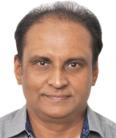Aviation is a high profile sector, riddled in a paradox in India. This sector, though can act as an economic growth engine, was always below the radar of the Indian politicians, who wore socialism on their sleeves and wherever possible bent backwards to “stand with the poor man”, many times reality being otherwise. They not only fought to be seen vocal for the “poor”, they projected themselves to be “away from the rich and industrialists”. Hence an increase of 5 paise in tram-fare in Kolkotta could disrupt the parliament, but an increase in Rs 20 per litre in Aviation Turbine Fuel fare (ATF) would not be worthy of being mentioned, as it is a “rich man’s” transport. Cities like Denver in USA, Frankfurt in Germany etc grew around airport as airport hub cities, but in India Aviation sector is treated as the cash-cow, ready to be milked/taxed for cross-subsidising other transport sectors. No politician would openly speak for a tax cut in VAT for ATF (some states have VAT on ATF as high as 29%) or MRO industry, as it is bad “optics” openly admitted by a high profile finance minister, when a pre-budget presentation for reduction of taxes for the nascent MRO industry was made to him. In the dollar denominated MRO industry with a potential of USD 2 Billion in India, suggestions to reduce the exorbitant taxes and streamlining the procedures to handle aircraft parts etc and to “let the goose which can lay golden eggs, mature enough to lay eggs” fell on deaf ears for many years, citing optics!
But aviation is a high profile sector, as most of the people “who matter”, and live in big cities, fly in and out of airports, demanding quality services. The glamour co-efficient adds to the charm. So aviation always remains in news. Any small incidents in the sector occupy front page space in newspapers.
Air travel was out of reach of common people and was NOT a commoner’s mass transport mode, till Lost Cost Carriers brought the price ceiling crashing down. People flocked to fly. But despite it started its growth into the third largest market in the world in aviation sector and commoners “HAWAI slippers mein” started “hawa mein UDAN”, the sector still retains its “elitist optics”. The helicopter and business aircrafts are not considered important in India.
Asok Kumar joined the sector in 2011 and worked till August 2015, handling flight safety, security, training and developmental issues in his capacity as Joint Secretary, Ministry of Civil Aviation (and CVO, AAI for over a year).
As Joint Secretary, Ministry of Civil Aviation (2011-15) he
(a) set-up Aircraft Accidents Investigation Bureau (AAIB) of India in 2012;
(b) was the convener of the CoS (Committee of Secretaries) setup to address factors causing stress in aviation sector. Based on its recommendations,reforms like FDI by foreign airlines, import of ATF by airlines etc were brought in by the government;
(c) served as representative of Government in the Board of Directors of Air India & Pawan Hans Ltd;
(d) drafted the Civil Aviation Authority Bill, 2013 and the Anti Hijacking Bill,2014;
(e) was in charge of the preparation of the
(i) National Civil Aviation Security Program 2015 and
(ii) the 1st draft National Civil Aviation Policy 2015;
(iii) revised Route Dispersal Guidelines, which led to the UDAN scheme later on
(f) started the process for e-GCA (for computerizing operations in DGCA);
(g) played a key role in the helping the ailing aviation, helicopter and MRO industry in times of crisis, by making policy interventions etc to help them out. eg support to Spicejet and many helicopter companies from closing down.
(h) opened up hotels in the DIAL Aerocity, which were kept closed for years citing security reasons;
(i) piloted bold initiatives like removal of cabin-bag tags, e-boarding (boarding aircrafts without paper boarding passes), biometric Airport Entry Passes
(j) worked as CVO (FAC) of Airport Authority of India, in two spells, for about a year, during which e-tendering for all procurements were made compulsory; payment of airport operations charges was restricted to e-payments only from 2014, thus preventing huge cash transactions at the airports;
(k) introduced Bio-metric attendance from 1/1/2014 and e-office from 1/1/2015 in MoCA,;
(l) headed a committee which gave a report on facilities at airports and aircrafts for Persons with Reduced Mobility;
(m) started many initiatives for development of General Aviation; helicopter operations and MROs
(n) streamlined the functions of training institutes and IGRUA and played a key role in setting up the Rajiv Gandhi Aviation University in Furstaganj, Uttar Pradesh.
(o) organized the major “India Aviation” show at Hyderabad in March 2014 and air shows at Ahmedabad in April 2015
(p) as a Student Pilot Licence holder, has flown Cessna 174-R for over 12 hours in the Telangana Aviation Academy, Hyderabad.




